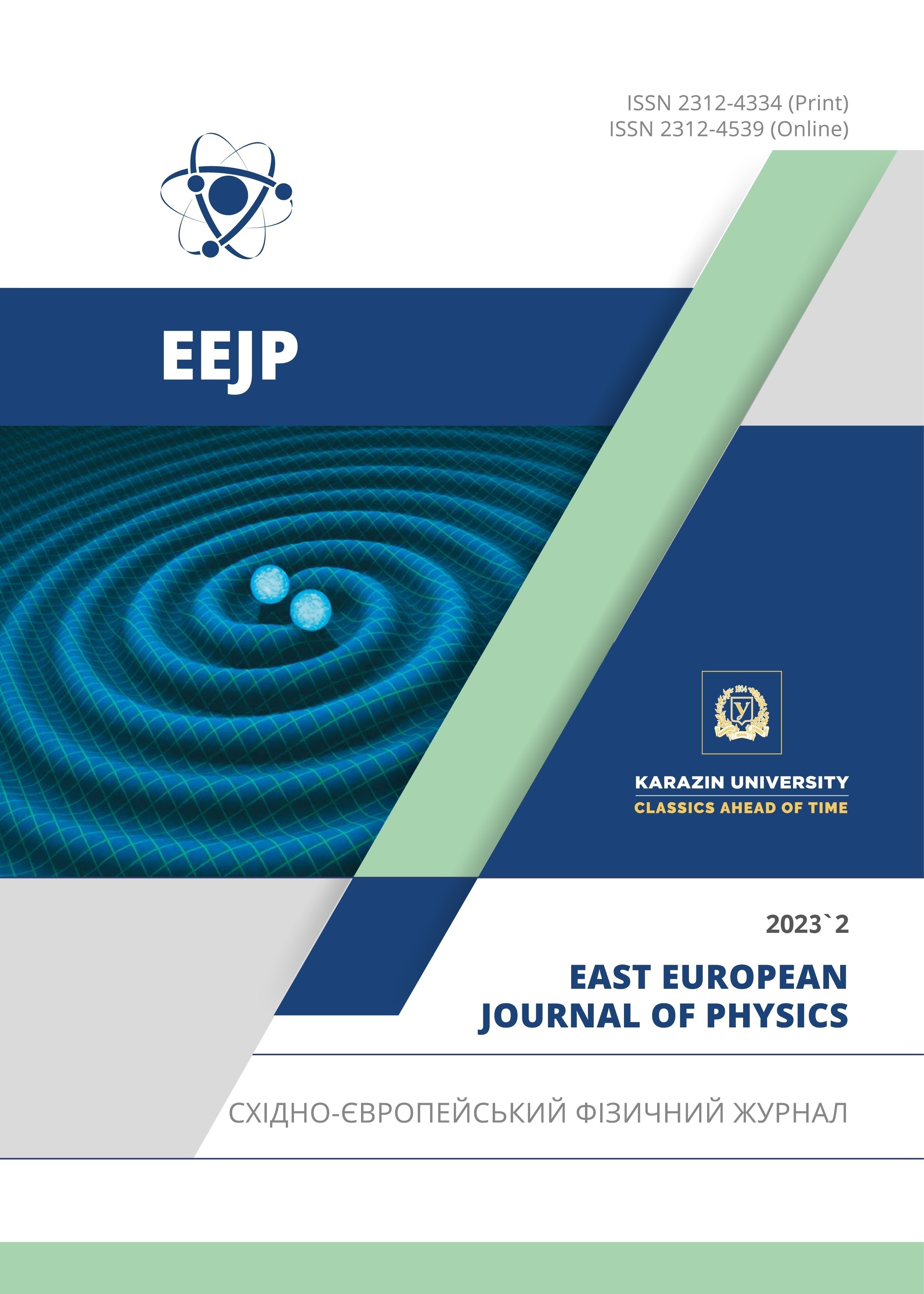Reevaluation Body Weight and Age with Standardized Uptake Value in the Liver Cancer for [18F] FDG PET/CT
Abstract
Standardized uptake values, often known as SUVs, are frequently utilized in the process of measuring 18F-fluorodeoxyglucose (FDG) uptake in malignancies . In this work, we investigated the relationships between a wide range of parameters and the standardized uptake values (SUV) found in the liver. Examinations with 18F-FDG PET/CT were performed on a total of 59 patients who were suffering from liver cancer. We determined the SUV in the liver of patients who had a normal BMI (between 18.5 and 24.9) and a high BMI (above 30) obese. After adjusting each SUV based on the results of the body mass index (BMI) and body surface area (BSA) calculations, which were determined for each patient based on their height and weight. Under a variety of different circumstances, SUVs were evaluated based on their means and standard deviations. Scatterplots were created to illustrate the various weight and SUV variances. In addition to that, the SUVs that are appropriate for each age group were determined. SUVmax in the liver was statistical significantly in obese BMI and higher BSA, p- value <0.001). Age appeared to be the most important predictor of SUVmax and was significantly associated with the liver SUVmax with mean value (58.93±13.57). Conclusions: Age is a factor that contributes to variations in the SUVs of the liver. These age-related disparities in SUV have been elucidated as a result of our findings, which may help clinicians in doing more accurate assessments of malignancies. However, the SUV overestimates the metabolic activity of each and every individual, and this overestimation is far more severe in people who are obese compared to people who have a body mass index that is normal (BMI).
Downloads
References
M.R. Hasan, S.M. Kadam, and S.I. Essa, “Diffuse Thyroid Uptake in FDG PET/ CT Scan Can Predict Subclinical Thyroid Disorders,” Iraqi Journal of Science, 63(5), 2000-2005 (2022). https://doi.org/10.24996/ijs.2022.63.5.15
R.L. Wahl, “Targeting glucose transporters for tumor imaging: “sweet” idea, “sour”, result,” J. Nucl. Med, 37, 1038-1041 (1996). https://jnm.snmjournals.org/content/jnumed/37/6/1038.full.pdf
A.D. Culverwell, A.F Scarsbrook, and F.U. Chowdhury, “False-positive uptake on2-[(1)(8)F]-fluoro-2-deoxy-D-glucose (FDG)positron-emission tomography/computed tomography (PET/CT) in oncological imaging,” Clin. Radiol. 66, 366 382 (2011). https://doi.org/10.1016/j.crad.2010.12.004
S.G. Hasselbalch, G.M. Knudsen, B. Capaldo, A. Postiglione, and O.B. Paulson, “Blood-brain barrier transport and brain metabolism of glucose during acutehyperglycemia in humans,” J. Clin. Endocrinol. Metab, 86, 1986-1990 (2001). https://doi.org/10.1210/jcem.86.5.7490
B. Bai, J. Bading, and P.S. Conti, “Tumor quantification in clinical positron emissiontomography”, Theranostics, 3(10), 787-801 (2013). https://doi.org/10.7150%2Fthno.5629
L.G. Strauss, and P.S. Conti, “The application of PET in clinical oncology”, J. Nucl. Med. 32, 623-648 (1991). https://jnm.snmjournals.org/content/jnumed/32/4/623.full.pdf
K. Kubota, T. Matsuzawa, M. Ito, K. Ito, T. Fujiwara, Y. Abe, S. Yoshioka, et al. “Lung tumor imaging by positron emission tomography using C-11 L methionine,” J. Nucl. Med. 26, 37-42 (1985). https://jnm.snmjournals.org/content/jnumed/26/1/37.full.pdf
L.G. Strauss, J.H. Clorius, P. Schlag, B. Lehner, B. Kimmig, R. Engenhart, M. Marin-Grez, et al. “Recurrence of colorectal tumors: PET evaluation,” Radiology, 170, 329-332 (1989). https://doi.org/10.1148/radiology.170.2.2783494
I. Sarikaya, A. Sarikaya, and P. Sharma, “Assessing effect of various blood glucose levels on 18F-FDG activity in the brain, liver and blood pool,” J. Nucl. Med. Technol. 47(4), 313-318 (2019). https://doi.org/10.2967/jnmt.119.226969
M.H. Mahmud, A.J. Nordin, F.F. Ahmad, and A.Z.F. Azman, “Impacts of biological and procedural factors on semiquantification uptake value of liver in fluorine-18 fluorodeoxyglucose positron emission tomography/ computed tomography imaging,” Quant Imaging Med. Surg. 5, 700-707 (2015). https://doi.org/10.3978%2Fj.issn.2223-4292.2015.05.02
C.K. Kim, N.C. Gupta, B. Chandramouli, and A. Alavi, “Standardized Uptake Values of FDG: Body Surface Area Correction is Preferable to Body Weight Correction,” J. Nucl. Med. 35, 164-167 (1994). https://jnm.snmjournals.org/content/jnumed/35/1/164.full.pdf
C.Y. Lin, W.Y. Lin, C.C. Lin, C.M. Shih, L.B. Jeng, and C.H. Kao, “The negative impact of fatty liver on maximum standard uptake value of liver on FDG PET,” Clin. Imaging, 35, 437-441 (2011). https://doi.org/10.1016/j.clinimag.2011.02.005
C.P.W. Cox, D.M.E. van Assema, F.A. Verburg, T. Brabander, M. Konijnenberg, and M. Segbers, “A dedicated paediatric [18F] FDG PET/CT dosage regimen,” EJNMMI Res. 11, 65 (2021). https://doi.org/10.1186/s13550-021-00812-8
G.G. Bural, D.A. Torigian, A. Burke, M. Houseni, K. Alkhawaldeh, A. Cucchiara, S. Basu, and A. Alavi, “Quantitative assessment of thehepatic metabolic volume product in patients with diffuse hepatic steatosisand normal controls through use of FDG-PET and MR imaging: a novelconcept,” Mol. Imaging Biol. 12, 233-239 (2010). https://doi.org/10.1007/s11307-009-0258-4
WHO, Builiding foundations for health, progress of member states: report of the WHO Global observatory for health, (World Health Organization, 2006).
M. Fani, G.P. Nicolas, and D. Wild, “Somatostatin receptor antagonists for imaging and therapy,” J. Nucl. Med. 58(Suppl. 2), 61S-66S (2017). https://doi.org/10.2967/jnumed.116.186783
J. Sastre, F.V. Pallardó, R. Plá, A. Pellín, G. Juan, J.E. O'Connor, J.M. Estrela, J. Miquel, and J. Viña, “Aging of the liver: age-associated mitochondrial damage in intact hepatocytes,” Hepatology, 24(5), 1199-1205 (1996). https://doi.org/10.1002/hep.510240536
Copyright (c) 2023 Aya B. Hade, Satar M. Kadam, Samar I. Essa

This work is licensed under a Creative Commons Attribution 4.0 International License.
Authors who publish with this journal agree to the following terms:
- Authors retain copyright and grant the journal right of first publication with the work simultaneously licensed under a Creative Commons Attribution License that allows others to share the work with an acknowledgment of the work's authorship and initial publication in this journal.
- Authors are able to enter into separate, additional contractual arrangements for the non-exclusive distribution of the journal's published version of the work (e.g., post it to an institutional repository or publish it in a book), with an acknowledgment of its initial publication in this journal.
- Authors are permitted and encouraged to post their work online (e.g., in institutional repositories or on their website) prior to and during the submission process, as it can lead to productive exchanges, as well as earlier and greater citation of published work (See The Effect of Open Access).








